- Meixia Ding
- Presenter’s NSFRESOURCECENTERS
- Temple University
- Ryan Hassler
- Graduate Assistant
- Presenter’s NSFRESOURCECENTERS
- Temple University
CAREER: Algebraic Knowledge for Teaching: A Cross-Cultural Perspective
NSF Awards: 1350068
2015 (see original presentation & discussion)
Grades K-6
What knowledge is needed for teaching algebra in early grades? What practices are effective for realizing student success? These questions have received considerable attention in the mathematics education community. The goal of this research is to identify, from a cross-cultural perspective, essential Algebraic Knowledge for Teaching (AKT) that will enable elementary teachers to better develop students’ algebraic thinking. Focusing on two fundamental mathematical ideas recently emphasized by the Common Core State Standards – inverse relations and properties of operations – this study explores AKT based on integrated insights of the U.S. and Chinese expert teachers’ classroom performance. It will be focused on three objectives: (1) identify AKT that facilitates algebraic thinking and develop preliminary findings into teaching materials; (2) refine research-based teaching materials based on the evaluative data; and (3) integrate research with education through course development at Temple University and teacher outreach in Philadelphia. A design-based research method will be used to accomplish objectives. Cross-cultural videotaped lessons will be first analyzed to identify AKT, focusing on teachers’ use of worked examples, representations, and deep questions. This initial set of findings will then be developed into teaching materials. The U.S. and Chinese expert teachers will re-teach the lessons as part of the refinement process. It is expected that project findings will shed light on approaches to teach early algebra and promote various collaboration. It is also expected that the videos of expert teaching will also be useful future research by cognitive researchers studying ways to improve mathematics learning.
Related Content for Algebraic Knowledge for Teaching
-
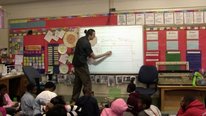 2016CAREER: Algebraic Knowledge for Teaching
2016CAREER: Algebraic Knowledge for Teaching
Meixia Ding
-
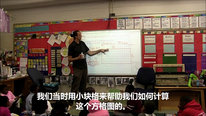 2022Teaching Early Algebra through Example-Based Problem Solving
2022Teaching Early Algebra through Example-Based Problem Solving
Meixia Ding
-
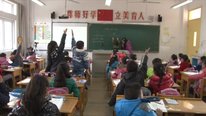 2018Videos as a Tool to Support Cross-cultural Teacher Learning
2018Videos as a Tool to Support Cross-cultural Teacher Learning
Meixia Ding
-
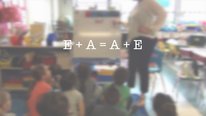 2017Young Children's (K-1) Understanding of Algebraic Thinking
2017Young Children's (K-1) Understanding of Algebraic Thinking
Bárbara Brizuela
-
 2017Inquiry across Classrooms
2017Inquiry across Classrooms
Jianwei Zhang
-
 2018GLOBE Student Research Experience
2018GLOBE Student Research Experience
Jan Heiderer
-
 2020Project-Based Inquiry (PBI) Global 2020
2020Project-Based Inquiry (PBI) Global 2020
Hiller Spires
-
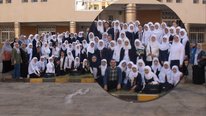 2017Developing Adanced STEM High Schools in Egypt
2017Developing Adanced STEM High Schools in Egypt
F. Merlino


Carolina Milesi
Senior Research Scientist
How do you expect Algebraic Knowledge for Teaching to vary between schools in China and the U.S.? How do you expect the teaching materials you develop to vary across contexts?
Meixia Ding
Associate Professor
Hi Carolina, Thanks for your great questions! We anticipate teachers’ algebraic knowledge for teaching (AKT) in the US and China will very in terms of the use of worked examples, representations, and deep questions. For instance, the nature of worked examples might be different. Based on our prior textbook studies and recent analysis of project video data, we found that Chinese lessons tended to situate the teaching of inverse relations in concrete story situations with a focus on quantitative relationships. In contrast, the US lessons frequently involved manipulatives etc. (e.g., cubes, fact triangles) with a focus on numerical relationships.
Regardless of the differences, we have noticed similarities across contexts. For instance, the US classrooms where “Go Math” is used as curriculum teach “bar models,” which is a type of representation frequently used in Chinese classrooms. Such similarities provide a common ground to develop materials that may be useful for teachers at both countries. Our materials to be developed in year 3 will contain integrated insights of expert teachers at both sides and may be used as supplemental materials for existing curricula. Teachers at both countries may choose different aspects based on their needs (e.g., the model of “fact triangle” has never occurred in the Chinese classrooms; therefore, Chinese teachers may incorporate it into the lesson where inverse word problems are introduced; in contrast, the inverse word problems has rarely occurred in the US classrooms; thus, the US teachers may incorporate such contexts so as to improve its meaning and relevance of a fact triangle model.
Gerald Kulm
Meixia, will you use video examples to help teachers reflect on what they did and see how their current practice might be changed?
Meixia Ding
Associate Professor
Hi Dr. Kulm, So great to hear from you! Yes, in year 3, there will be an ongoing US-China online teacher forum during which, teachers at both countries will be encouraged to watch the selected video clips, ask questions, and make comments on each other’s videos. In the summer of Year 3, we will provide summer workshops with teachers at both countries. During the workshops, video examples will also be shared with teachers for reflections on possible changes of their practice.
Gerald Kulm
Sounds like a great approach for sharing. I can see some reflection of the MSMP :-)
Meixia Ding
Associate Professor
Absolutely! It is an extension of my dissertation :) Thank you for all instruction!
Tamara Moore
Associate Professor
Hi Meixia-
I have just returned from China. While I was there, I was presenting open-ended problem solving (modeling) to prospective teachers. Many of them said that they have never seen problems of this nature before. What are your plans to share your work in China as you learn more about algebraic learning? And while testing is important, do you have other measures of mathematical understanding that you will consider?
Meixia Ding
Associate Professor
Hi Tamara,
That’s an interesting observation! I am very interested in knowing more about “open-ended problems solving (modeling)” you mentioned. Do you have any recommendations for your research or other resources that I can read?
In our Year 3 workshop with Chinese teachers, we plan to share with them about US expert teachers’ instructional insights (e.g., unique mathematical tasks, instructional techniques especially in a setting with diversity). In addition, we hope to help Chinese teachers understand the underlying learning theories that support their teaching practice.
With regard to measures of mathematical understanding, in addition to test scores, we will code students’ explanations and representations based on their responses to our instruments and in the videos (we have both teacher camera and student camera for each lesson). In fact, “measuring understanding” is a quite challenging but important topic. Do you have any other suggestions for us in this regard?
Tamara Moore
Associate Professor
Multiple representations is a great way to think about mathematical understanding. I really like using the Lesh Translation Model as a theoretical framework for this type of research.
Kathy Perkins
Sounds like a great project! I’m very interested to see what you find out about the differences in teaching knowledge and practices as you progress.
Meixia Ding
Associate Professor
Thank you, Kathy! Based on the videos that we collected this year, we have already identified many interesting cross-cultural differences, along with similarities. We cannot wait to share them with the field!
Dacid Lustick
Associate Professor
Having done my post doc on developing a bilingual early learning school in Beijing, I know how challenging these kinds of projects can be. I am interested in learning more about the significance of the work and what you hope to gain in terms of understanding. Also, how do you deal with the issue of translation in a reliable and cost effective manner?
thanks for sharing—looks like an awesome project!
Meixia Ding
Associate Professor
Dave, You are right! We have encountered various challenges (e.g., grade level matching, curriculum differences etc.) and worked out ways to resolve these issues. The rationale of this project is that learning fundamental mathematical ideas (e.g., inverse relations, properties of operations) are common goals for math education across culture. In addition, the components of the IES recommendations (e.g., worked examples, representations, and deep questions) are also common instructional factors across countries. These common grounds have provided an opportunity to identify effective algebraic knowledge for teaching (AKT) that may foster students’ algebraic thinking in elementary school. We argue that this work is significant because (a) it is the very first study to seek AKT focusing on fundamental mathematical ideas from a cross-cultural perspective, (b) the targeted early algebra topics are fundamental ideas recently emphasized by the CCSS, © the identification of AKT is guided by the high-quality cognitive research-based recommendations, and (d) the identification of AKT is based on expert teachers’ actual classroom practice. Through this project, it is our expectation that we will identify an example knowledge base of AKT needed to face challenges of improving U.S. students’ algebraic readiness based on cross-cultural experiences.
With regard to translation, we do not plan to translate every lesson. Instead, the PI and the team members who are fluent in Chinese will directly work on Chinese videos and the transcripts. Only those typical video clips will be translated for publication uses and other research purposes.
Dacid Lustick
Associate Professor
Thanks for the explanation. Best of luck. I agree that some AKT may cross cultural and language bounderies, but I still think that style of teaching and basic assumptions about teaching and learning remain serious considerations when conducting this type of international comparative study.
Meixia Ding
Associate Professor
Thanks for your comments, David. In our study, we will pay close attention to cultural factors when identifying integrated insights on AKT, which will inform the development of materials (a booklet) in year 3. These materials will be revised and refined based on teachers’ re-teaching of the lessons. In addition, we will collect data about student features (e.g., ethnic, ELL indicator, free lunch indicator), which will be taken into consideration for data analysis.
Yan Ping Xin
Hey Meixia,
I am so excited about your project!!
May I ask at which grade levels your project will target?
Further posting is closed as the event has ended.